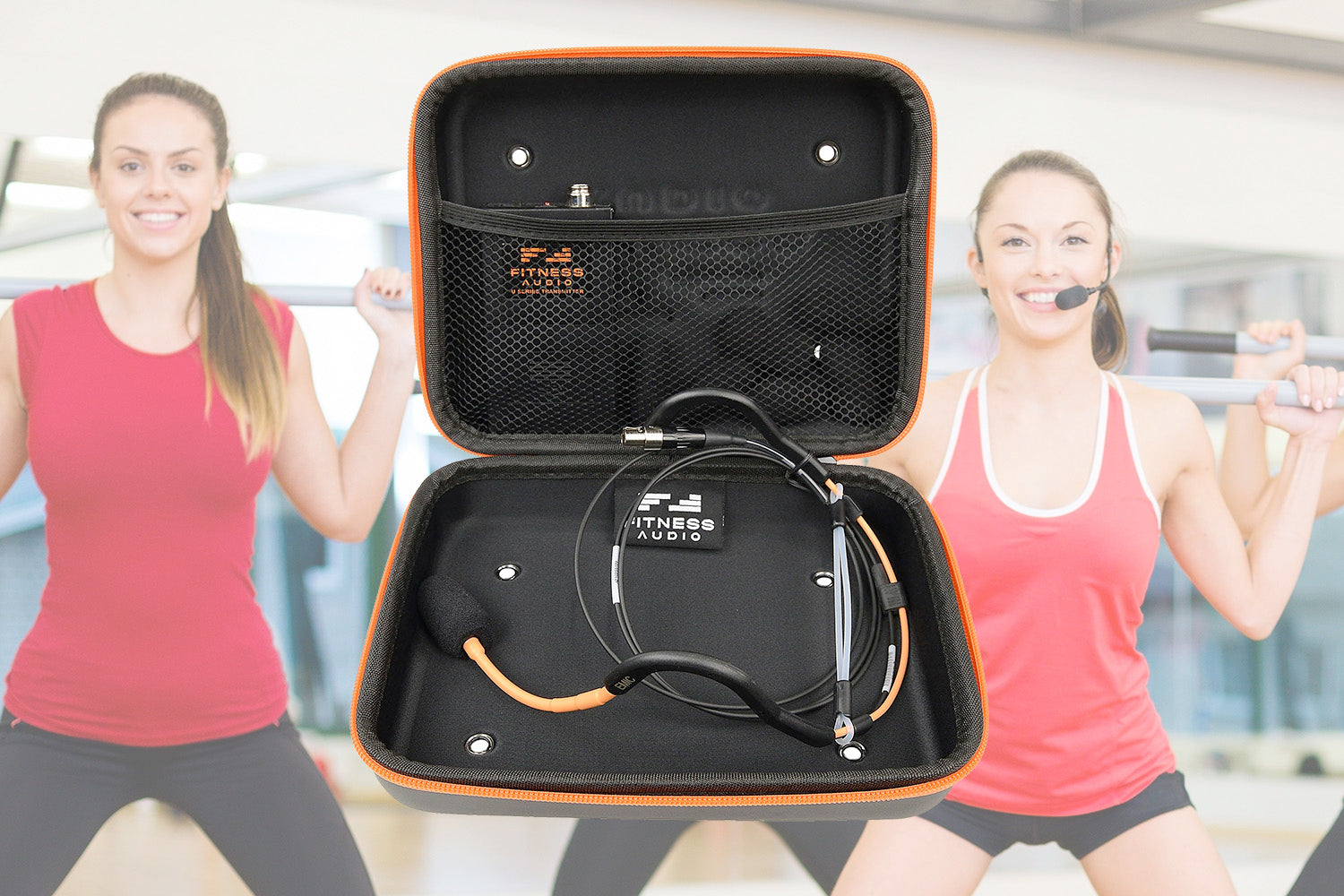8AM to 4PM PT
sales@avnow.com
8AM to 4PM PT
sales@avnow.com

All wireless microphone systems include a wireless transmitter, a wireless headset microphone, and a receiver. A wireless microphone for a Fitness Facility is a significant investment because if the microphone stops working, the show or classes stop! We recommend selecting the wireless microphone based on your planned usage at your fitness facility.
Planned usage can be calculated by the number of hours the microphone will be used on any given day in the room you plan to use the system. Each microphone model has been given an AV Now "sweat rating" that tells you how many hours of sweat exposure can be tolerated before the sweat starts to damage the microphone.
A wireless microphone system allows the user’s voice to be transmitted “wirelessly” to its receiver, located in the sound system. The sound system amplifies the signal from the receiver and outputs it through the system’s speakers.
A wireless microphone system consists of three main components (detailed below) that essentially operate together as a low powered, individual radio station.
1. Microphone:
Though the first wireless microphone systems were designed with handheld mics, nearly all fitness instructors prefer the hands-free freedom a headset mic allows. The headset microphone connects to a transmitter, which is typically worn on the waist in a belt pouch. But technically there are two types of headset transmitters, detailed next...
Headset Examples:

2. Transmitter:
Wireless mic systems used for fitness originally all used bodypack transmitters, worn on the waist. The headset mic connects to a bodypack transmitter via a short cable. In the early 2000s, Samson Technologies designed the first “transmitter on the headset” or "cable-less" wireless headset microphone, the Samson AirLine 77. These days, both types of transmitters (bodypack and cable-less) are widely used for group exercise instruction and are available from multiple manufacturers.

Transmitter Examples:
3. Receiver:
The receiver receives the radio transmission from the transmitter and converts it back to an audio signal so it can be amplified by the sound system. The receiver is typically connected to the sound system mixer, or to a portable speaker mic input jack.
Receiver Examples:

Q: Is a wireless mic system all I need for my class to hear me?
A: A wireless mic system makes no sound on its own. It must be connected to a sound system mixer or to a portable speaker. Note: some ‘all-in-one’ portable sound systems have a wireless receiver built-in, so this connection is already made.
Q: Will a Shure (for example) transmitter work with an Audio-Technica (for example) receiver?
A:
Q: Will an Audio-Technica (for example) headset mic work with a Shure (for example) body-pack transmitter?
A. Each wireless manufacturer uses a different type of connector for their headsets and bodypacks. This makes them generally not interchangeable. For example, Shure uses a 4-pin connector configured in a 'Y' shape. Audio-Technica uses a 4-pin connector configured in a square shape. You can’t physically plug a Shure headset into an Audio-Technica bodypack.

In 2022, the manufacturer of the E-Mic headset microphone released their new MulitMic connector that allows the connection to be made across all brands of a specific connector type. For example, Shure and Fitness Audio both use the 4-pin configured in a Y-shape for their headset connectors. Previously, these headsets had unique internal wiring making them not interchangeable. But with the E-Mic MultiMic connector the headset will work with any Y-shape configured transmitter connector.
Fitness-Rated Replacement Headsets
AV Now Fitness Sound began as a company that specialized in providing replacement headsets designed to withstand the tough, sweaty group exercise environment. This is still at the core of our business. Literally tens of thousands of customers – including some of the largest fitness chains in the US – come to us for our Fitness Audio E-Mic or Fitness Audio Aeromic Fitness Headset Microphones. These mics are designed specifically for fitness instructors. Most standard headset mics that come with a wireless mic system simply aren’t.
Give us a call at 800-491-6874 today to talk with us about your microphone or sound system needs!
{"one"=>"Select 2 or 3 items to compare", "other"=>"{{ count }} of 3 items selected"}
Leave a comment